Abstract:
Co-Barcelona is a project that rethinks the current policies develop for social and public housing in the city of Barcelona, in specific on the Eixample district, and why gentrification is more common in people under 30 who has to move to other parts of the city in order to start their independent life. Even the city council develop great strategies to stop gentrification by stoping high rents and increasing its public housing offer, that policies seem like a fight against the Real Estate sector and private companies. The city council policies start in 2016 and nowadays it does not have the expected impact, so we aim to rethink the current policy from the perspective of Real Estate and private investor, instead of having an eternal fight using tax punishment by the City Council. Our objective is to develop in conjunction with the public and private sector to develop social and public housing by introducing technology systems for management and the right to space instead of the right to surface for a metabolic allocation.
Assumption 2030:
According to Santiago Niño-Becerra (2020), the period between the present and 2060 will see an increase in the concentration of wealth, while not necessarily resulting in the increase in population with lower incomes. Under this scenario, how could people live in better quality and equity?
Current market opportunities:
In order to understand the opportunities for housing, we selected the most probable scenario, for that reason, let’s meet Antonio Garcia, a common under 30 citizen of Barcelona. Antonio grew up in Eixample and he still wants to live there, independently. With his current income at € 21,187.00, Antonio will have to save all his money for several years to buy a house. While the option to rent a flat is also not meeting a sustainable standard for ensuring a good level of residual income.

The average income for a person under 30 like Antonio is not enough in order to support buying a house in Eixample, even when income rises considerably from 2010 to 2019, The Eixample district is one of the most desired for living in the city of Barcelona, so that means that Real Estate pressure is higher than other districts of the city.
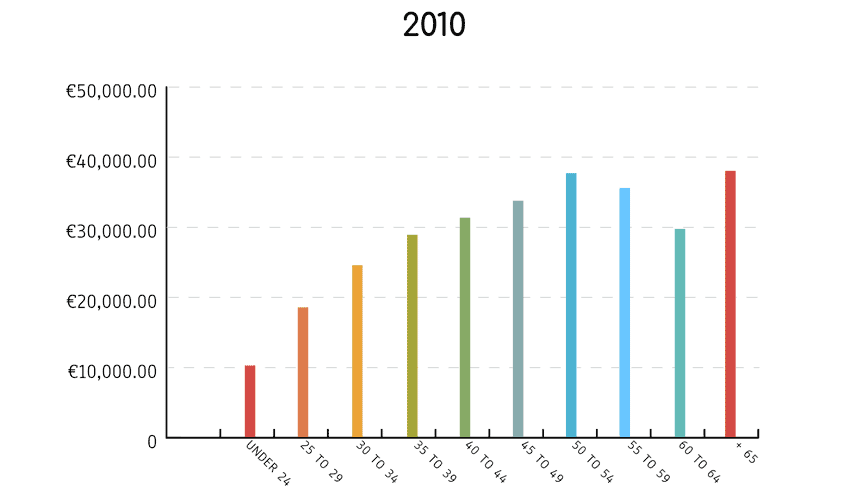
Source: INE
If Antonio wants to buy a place and still living in Eixample, is more probable that he has to move into San Antoni or Sagrada Familia which are accessible neighborhood in pricing but even than those zones are cheaper than Le Fort Pienc, La Dreta de L’Eixample, La Antiga Esquerra de l’Eixample, and La Nova Esquerra de l’Eixample, they are not the cheapest neighborhoods in Barcelona.
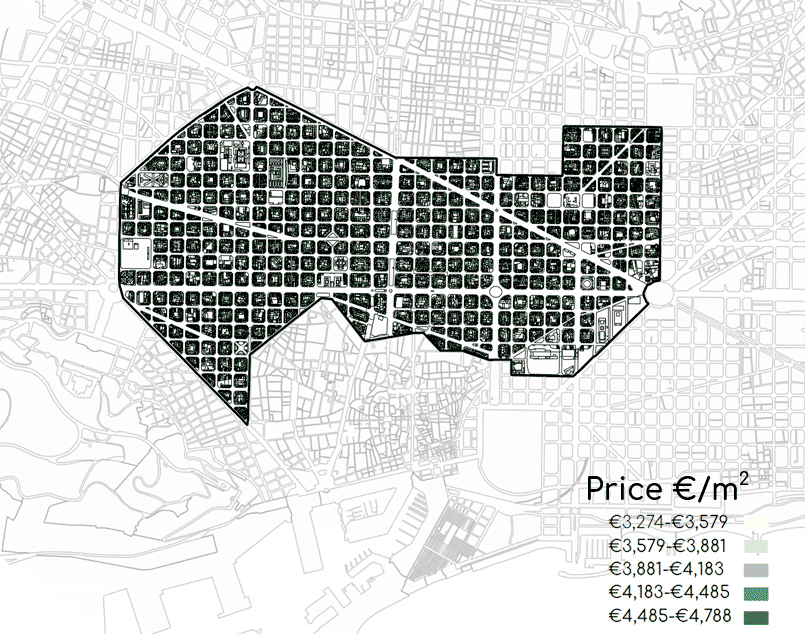
Source: Open Data BCN
In an optimistic scenario that Antonio does not spend all his money and he can save it for several years, the time waiting is higher, the ideal scenario is that 30 to 40% of his income goes for paying the housing, but if we made that scenario, Antonio and his income never will be paid the department, for that reason he has to leave Eixample in order to go a place that fits better with his income.
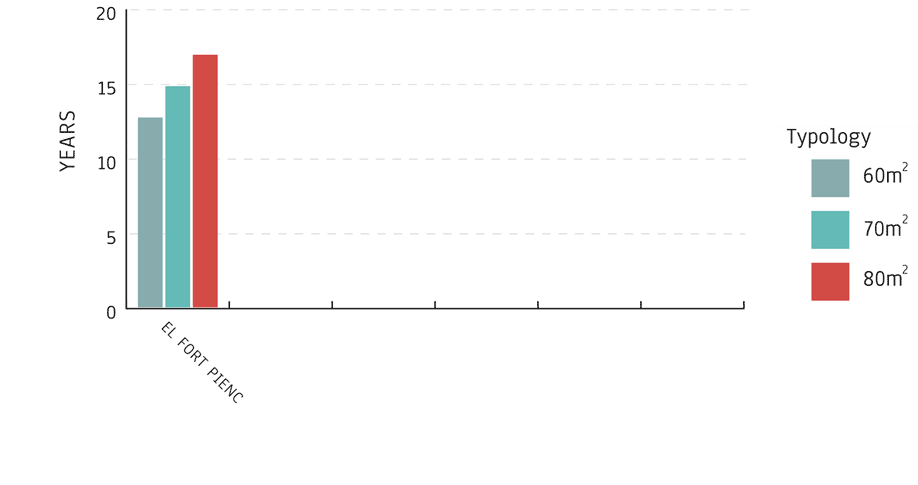
Calculation: (Price €/m2 x department m2)/ Antonio Income annually
But what about renting? Well, rent a place seems like the most ideal way for Antonio to don’t give up his dream to still living in Eixample, but even if he lives in the cheapest place inside San Antonio or Sagrada Familia, the spend distribution will not create a sustainable outcome – saving for Antonio, it means that this model is not allowing him to create savings.
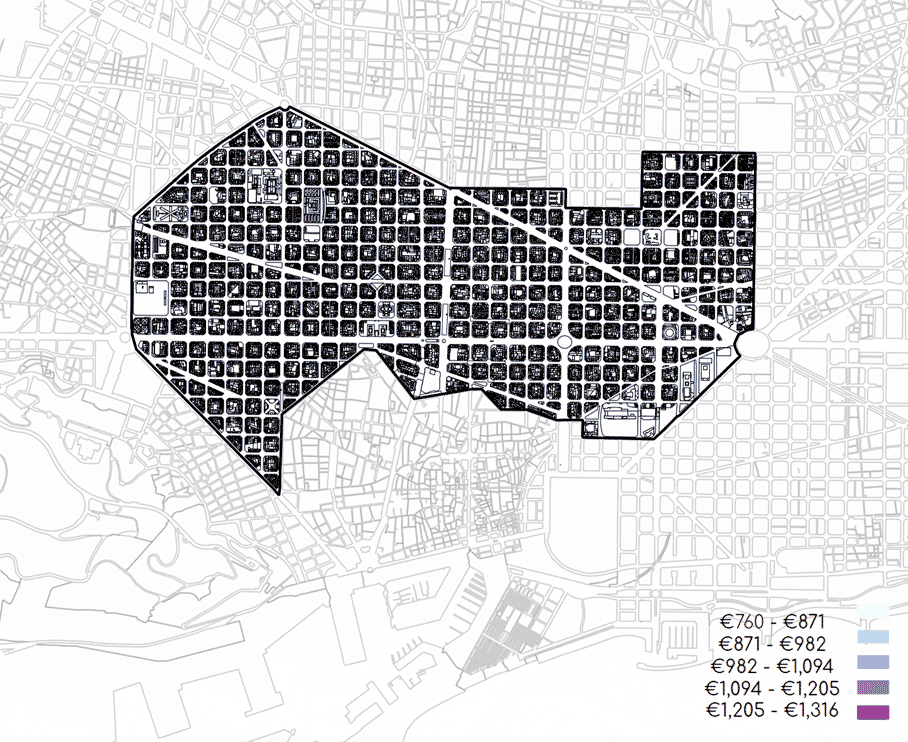
Source: Open Data BCN
The current model of spends for Antonio:

The IDEAL model of spends for Antonio:
An ideal spend model for any person is the one that balance Housing spend between 30 to 40% and savings at least in a 10%

The current market model is not allowing Antonio to stay in the place that he grew up, so if he wants to start an independent life, Antonio will have to move to another place in Barcelona, starting the process of gentrification as we know. this movement causes income–market movement, so now is introducing new people into the districts and these new users with new necessities will start again a gentrification process over again, cycling that never ends into the city.
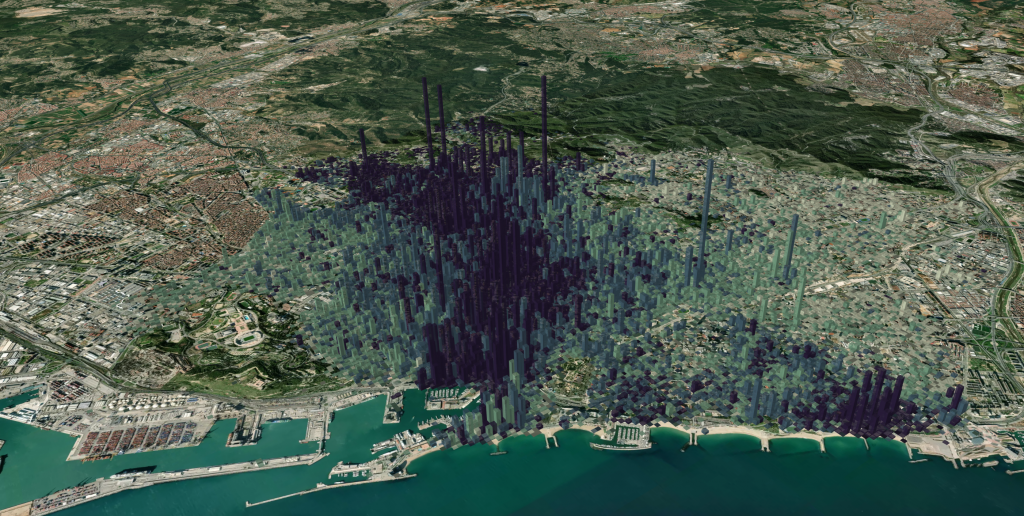 Source: fotocasa
Source: fotocasa
Policies develop in order to help citizens:
For that reason, the Barcelona City Council developed “Pla pel dret a l’hbitage de Barcelona 2016 – 2025” which is the current housing policy to stop gentrification and the rise of pricing for renting & selling housing. This policy has 3 main axes to face the problems which are:
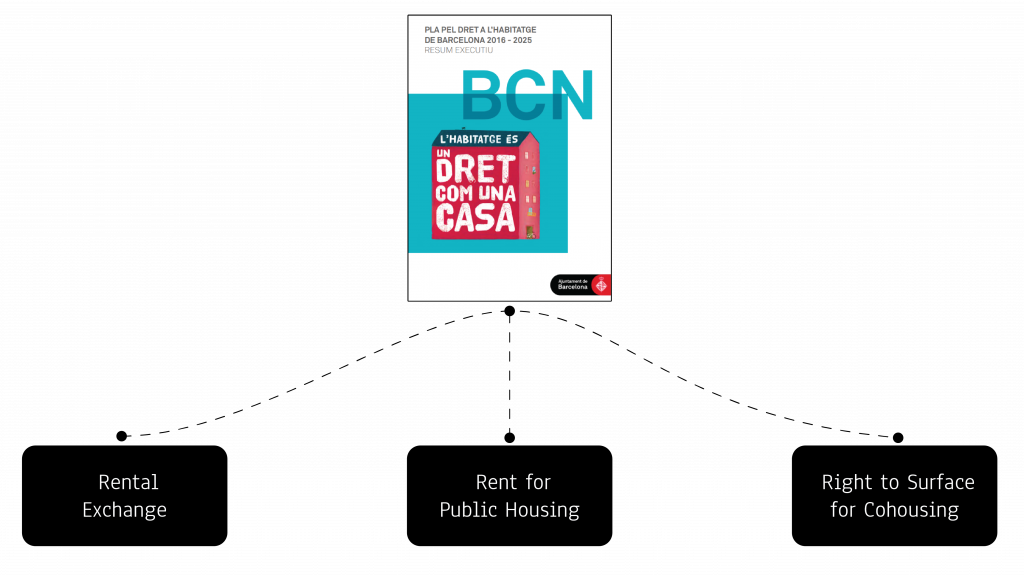
Beurocracry stops hope:
Instead of buying or renting a place to live in Eixample, Antonio turns to the application for affordable housing provided by Barcelona Government. Thanks to the right to surface policy, Antonio has the opportunity to obtain and secure affordable housing. He learns that the current increase of public supply cannot meet the current demand, and few supplies are located in Eixample. On the other hand, many housing supplies from the private sector stay for rent for years, occupying the best locations in the Eixample district. Under the current schemes for affordable housing provision, few of these private supply is connected and few private sectors collaborate in the process.
Rental Exchange Model:
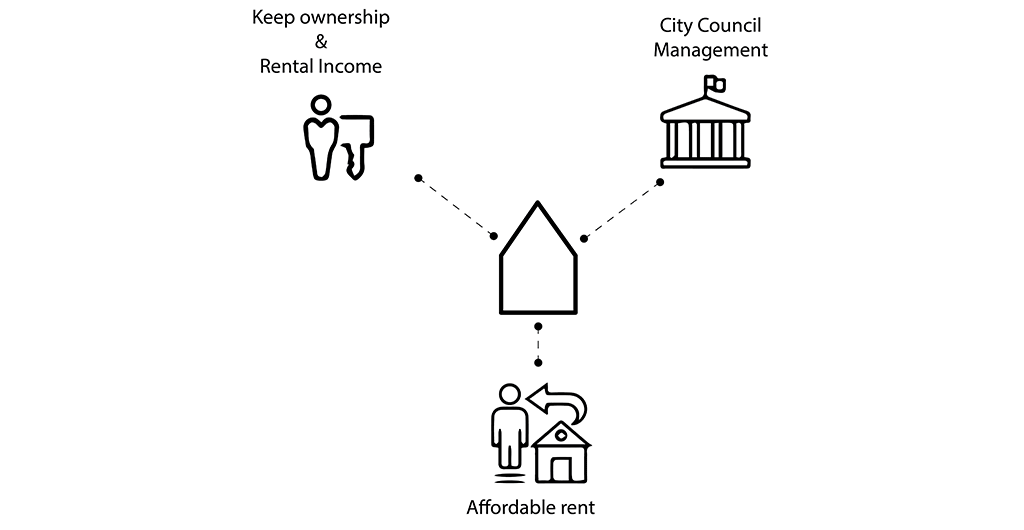
Rent for Public Housing Model:
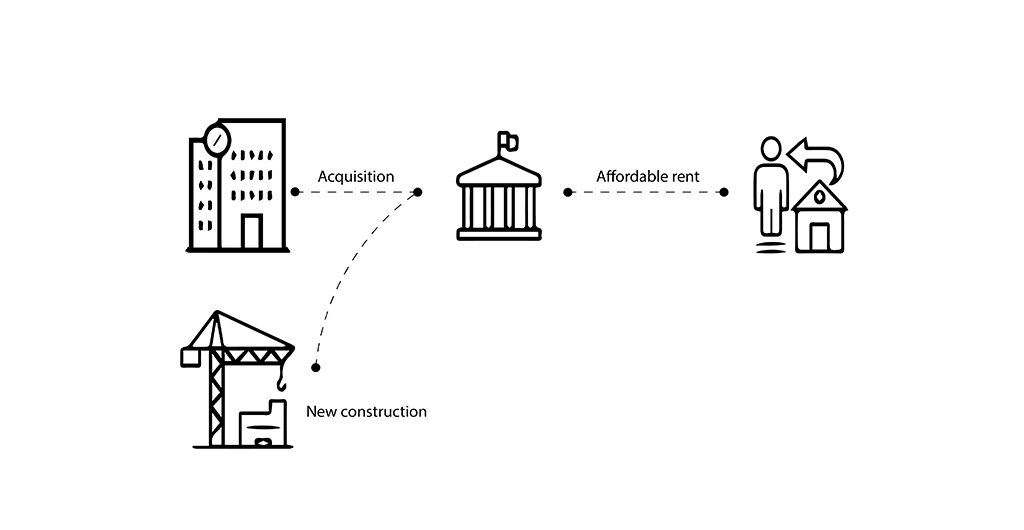
Right to surface – Cohousing Model:

A Third option:
Therefore, what would be the 3rd option, in addition to the free market and public housing, that could allow Antonio to secure a place to live in Eixample?
The key is to turn “right to surface” to “right to live”.

In order to achieve the change, we propose 3 phases for transition which are;
- Phase 1: Start of digitalization for the City Council by creating e-Barcelona, a digital platform that allows a citizen to improve their communication with the bureaucracy traits from the administration.
- Phase 2: Allowing Real Estate companies to develop public and affordable housing in collaboration with the city council by giving concessions to administrate for the private sector and tax incentives if they conceded 30% of the building for social housing, which will be managed by the public administration.
- Phase 3: Introducing global market to buy a right to place by the e-residence, with this we are now creating facilities to nomad people for a long stay in Barcelona to get access to the public services by paying a digital residence that allows traceability, taxes incorporation and access to a place to live temporarily.
Flip the norm:
Now people are buying according to his income percentage from 30 to 40% a Right to place which allows a citizen to stay in a place or move according to his necessities because now you are not buying a place to stay forever you are receiving the opportunity to have a place to live in a condominium residence that allows social mixture because the new building development has typologies from social housing to high residential housing, creating the concept of metabolic allocation which means that people can move inside the building for living according to their necessities and income, with that we are avoiding intermediaries, speculators, and bureaucracy.
Every citizen that buys a right to place is now a co-owner of the building which is administrated mostly by real estate companies with the hand of public administration for the accessible housing. In order to gain trustability in the transaction, technologies have an essential role to achieve this goal, by improving the e-Barcelona platform by adding the x-road system to secure data communication between entities and blockchain with a smart contract for citizens transparency transaction.
Now, e-Barcelona is a tool for management that facilitates citizen allocation, transactions, and communication between the public and private entities, creating efficiency in a digital world in which technologies are generating great changes.
e-Barcelona Platform:
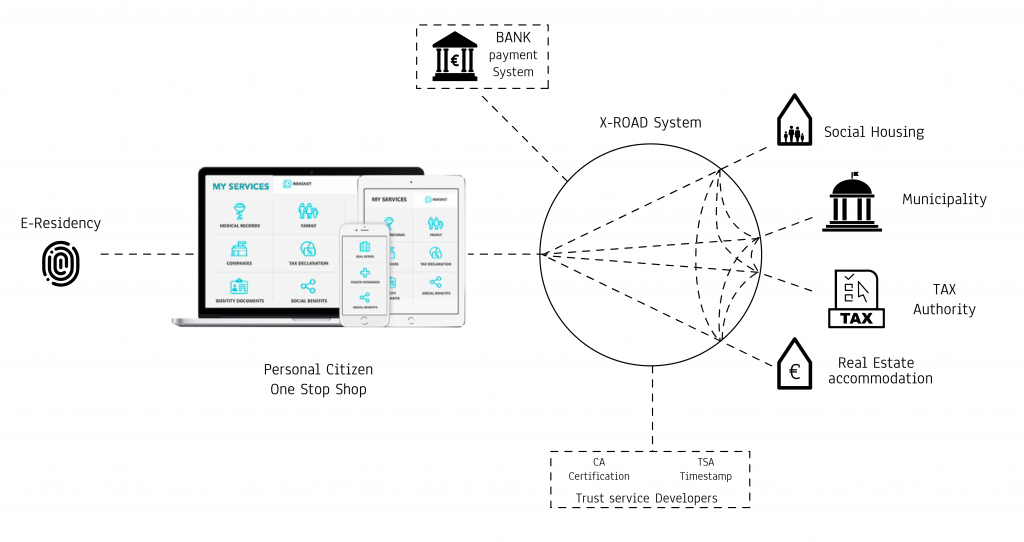
e-Barcelona transition services by phase:
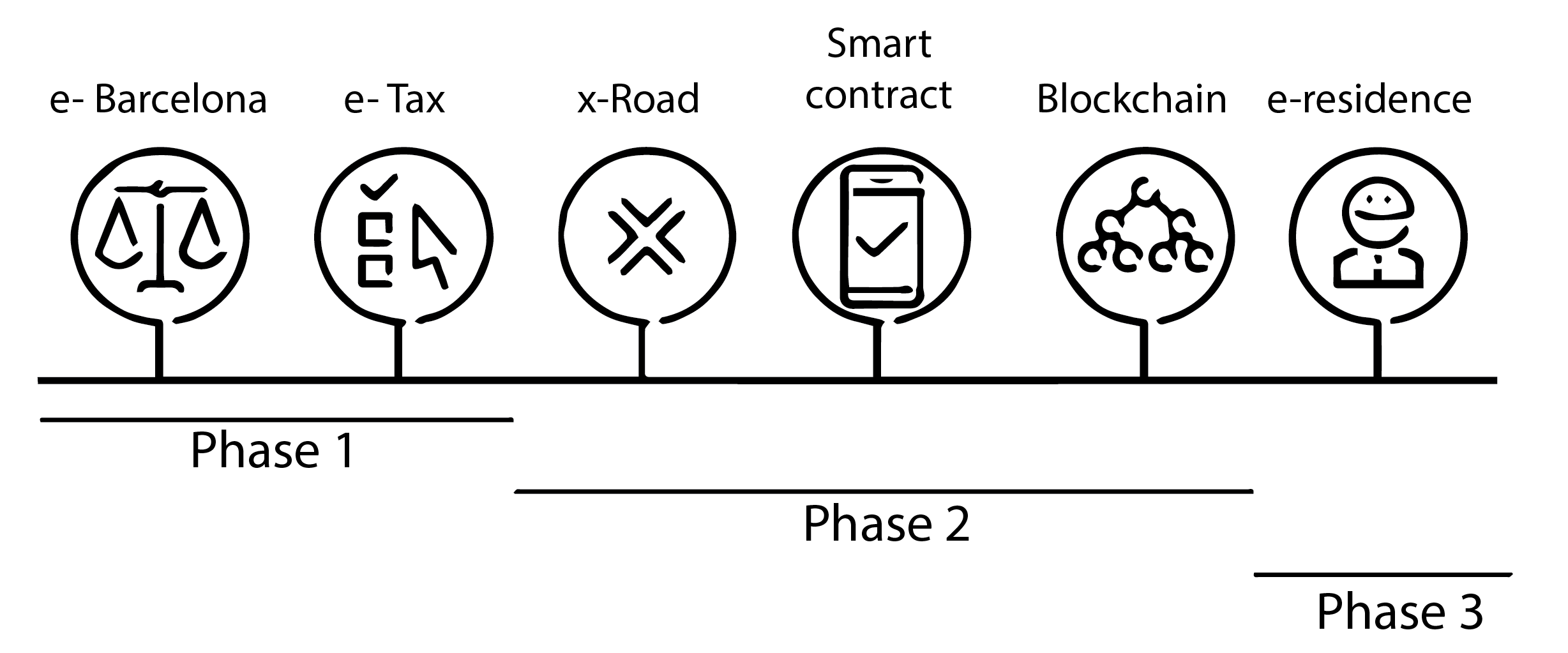
We aim for the digital leadership in governance for Barcelona, a city that demonstrates to be an international model for urbanism and city management, to be the principal digital city in the world.
Co-Barcelona is a project of IAAC, Institute of Advanced Architecture of Catalonia developed at Master in City and Technology in 2020/21 by students: Dongxuan Zhu, Miguel Angel Tinoco & Ivan Reyes, and faculty: Luis Falcón Martínez & Iacopo Neri